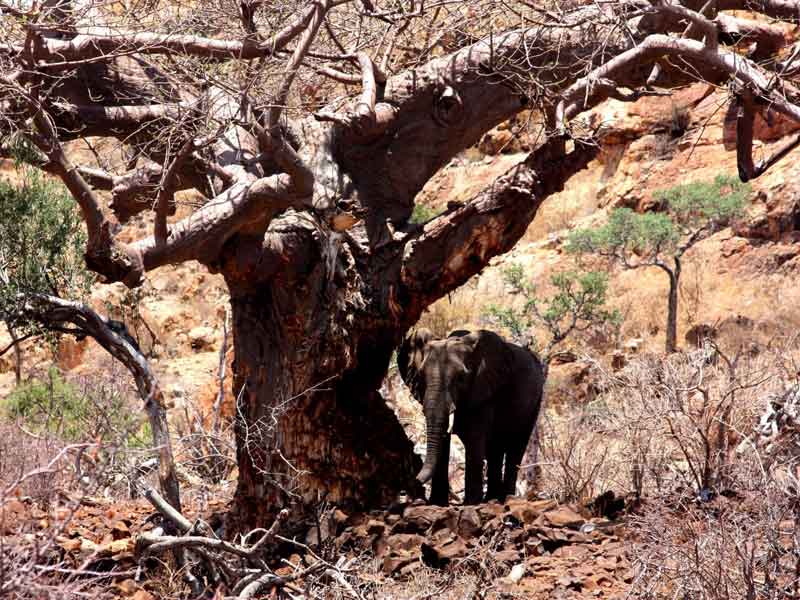Rescuing Mapungubwe ‘s Baobabs from elephant damage

Baobabs and elephants have been living in the same habitat for centuries. However, as the habitat for elephants shrink due to changing land use, they get boxed into fences with herds ever increasing on smaller and smaller patches of land.
Baobabs and other trees are then being browsed more intensely, with the result that many trees do not get enough time to recover, and eventually die.
With funding from Skoon Skincare for our Baobab Foundation, Dr Sarah Venter and Mapungubwe National Park have joined forces to help save some of Mapungubwe’s Baobabs that are too heavily browsed.
- Mesh irritates trunks of Elephants
- Baobab hollowed out by Elephants
- Rescue old Bao at Mapungubwe
To keep the elephants away from the Baobabs and allow the bark to recover, we have wrapped wire mesh around the trees, from the ground up to three meters in height. The elephants do not like the sensation of the wire on their tusks and trunks and therefore do not touch these trees.
Elephants like to feed on Baobab bark’s moist and sweet tasting wood, especially because it seems to contain the minerals and sugars they need in their diet.

Baobabs have a remarkable and unique ability to withstand complete debarking and can grow new bark straight from the damaged wound. The new bark takes a few months to regrow and can be removed repeatedly with the tree still surviving. However, repeated debarking in close succession, with the eventual gauging out of the trunk, leads to too much water loss and then these ancient giants collapse and die.
When the fences between Zimbabwe, Botswana and South Africa came down for the trans-border mirror parks, the number of elephants in Mapungubwe grew beyond the park’s carrying capacity. With this rapid increase the trees here are repeatedly being debarked without sufficient chance for them to regrow their bark.

The wire mesh will fortunately not impact on the growth of the Baobabs, for they grow extremely slow in arid environments. The trees will, in any case, be monitored every year and the wire mesh be adjusted every few years to accommodate new growth.
In the wiring process, we have been extra careful to leave access to existing hollows being used by other animals and birds, so that it does not impact their movement.
Other measures to protect the trees have been tried, including packing stones around the base of the baobab tees or to put beehives and chili packs around the trunks. But none of these have been found to be as effective as the wire mesh.
We are so grateful to Skoon Skincare for funding the first trial via their 1% for the Planet program. We have wired only sixteen of the oldest Baobabs recently. When this method proofs to be effective and if we can get more funding, we will continue with this important work, since all the numerous Baobabs in the park is affected.








